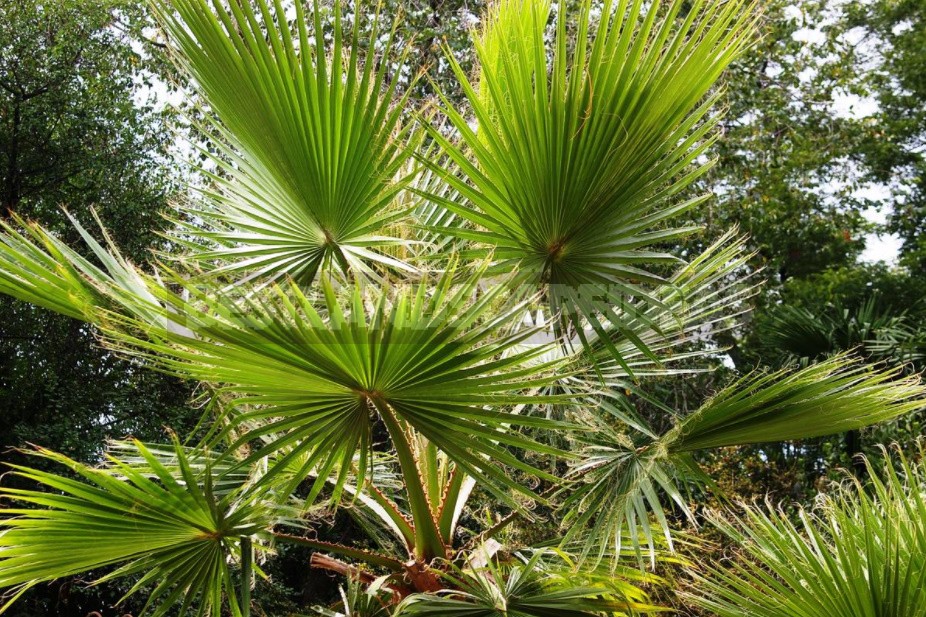
Today we have a meeting with superexpots-palm trees. Their peculiar appearance is so attractive that these plants have become the subject of dreams of many country aesthetes who prefer unusual woody species. And the palm trees meet the expectations of lovers of this culture, bringing a unique southern flavor and exotic charm to the sites. They have a beautiful and unusual everything: a picturesque trunk (if there is one), and majestic leaves.
Classification by appearance
According to the habitus (appearance), all species can be combined into 2 large groups — single-stemmed and bush-shaped.
Single-barrel
These include trees whose trunk is crowned with a bunch-a crown of large leaves. The most common representatives of this group are Trachycarpus.

They are characterized by a long-functioning apical meristem (educational tissue), thanks to which they grow and form leaves. But this particular feature has become the Achilles ‘ heel of such palm trees: when the top is damaged (by low temperatures, pests, mechanical injuries), they usually die. The trunk of palm trees is often covered with the remains of the bases of the petioles of dead leaves, which form a kind of” fibrous coat ” that protects the palm from both low temperatures and the scorching sun.
Bush-like
In these palms, the form of a bush is formed by subordinate trunks. In the south, one of the most common representatives of this group is Chamaerops humilis. Even with freezing, it quickly recovers.
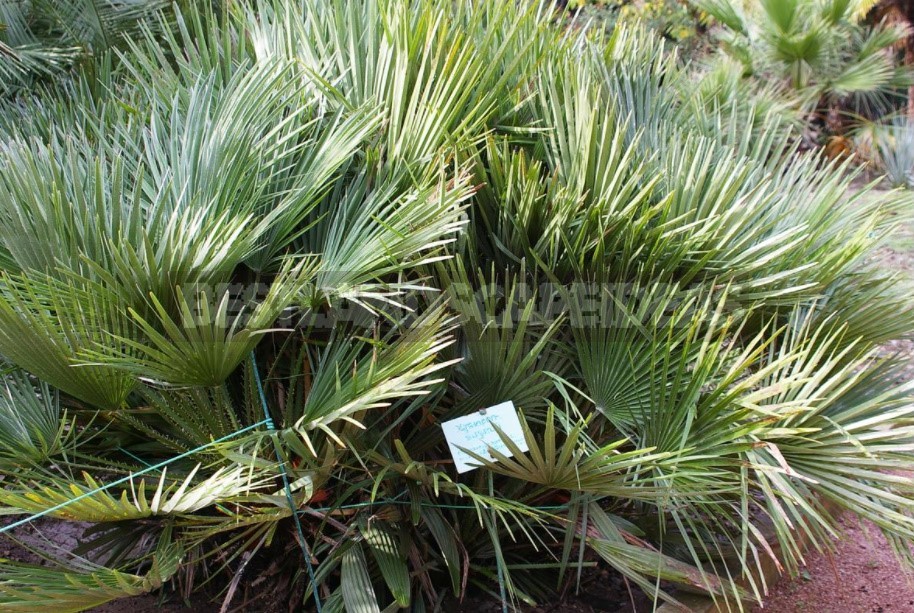
Classification by leaf shape
According to the shape of the leaves, palm trees are again divided into 2 large groups — fan-shaped and feathery.
Fan-shaped
The first group includes Trachycarpus, Chamaerops, Washingtonia and other palm trees, in which the lobes (segments) of the leaf are attached to the rachis (a shortened central vein of the leaf).
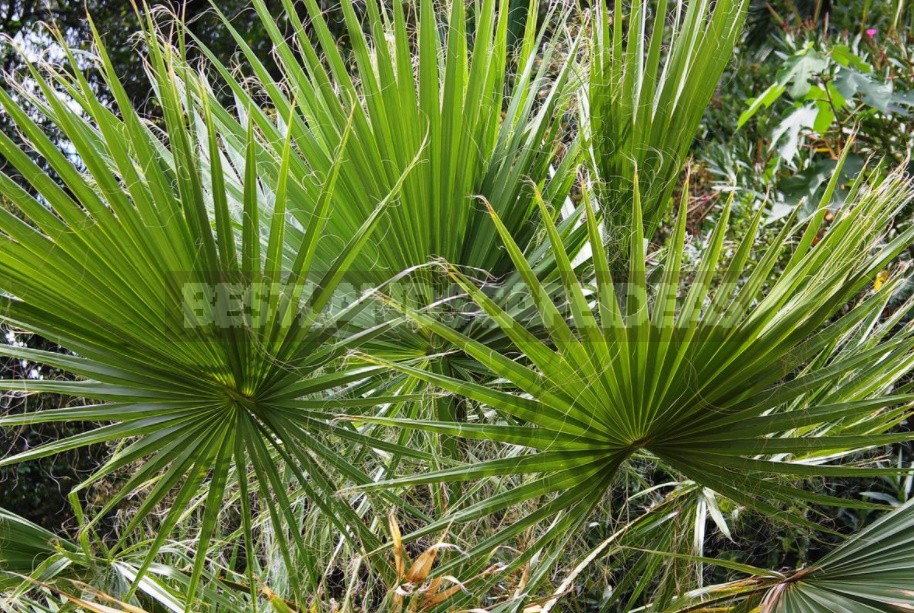
Feathery
The second group includes Jubaea chilensis, Phoenix canariensis and other palm trees, in which the rachis is elongated, sometimes very significantly. The leaf segments are usually bent along the vein.
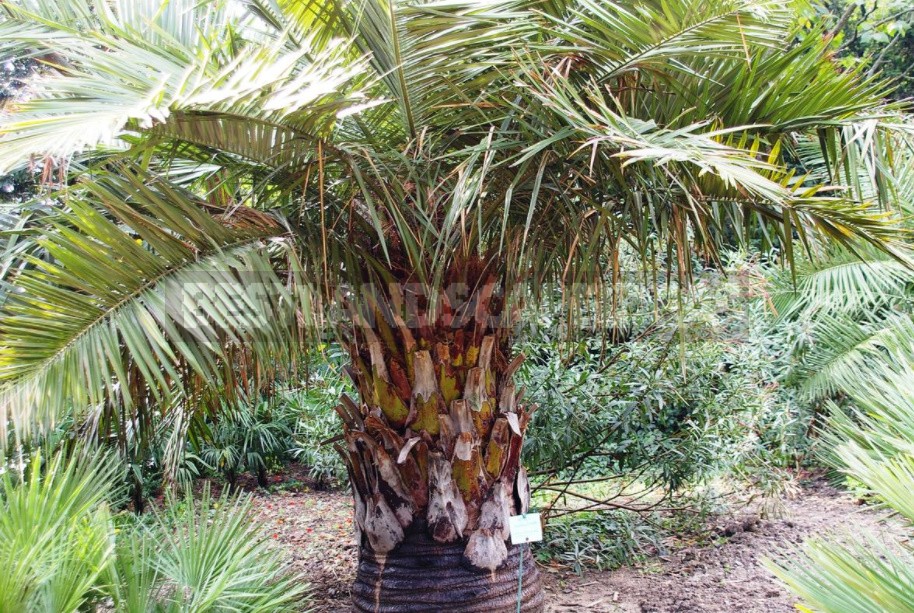
Types of palm trees growing in the open ground
After a short introduction to the world of palm trees, I suggest going on a virtual excursion to the palmarium of the botanical garden (Garden), which was founded in the 80s of the last century.
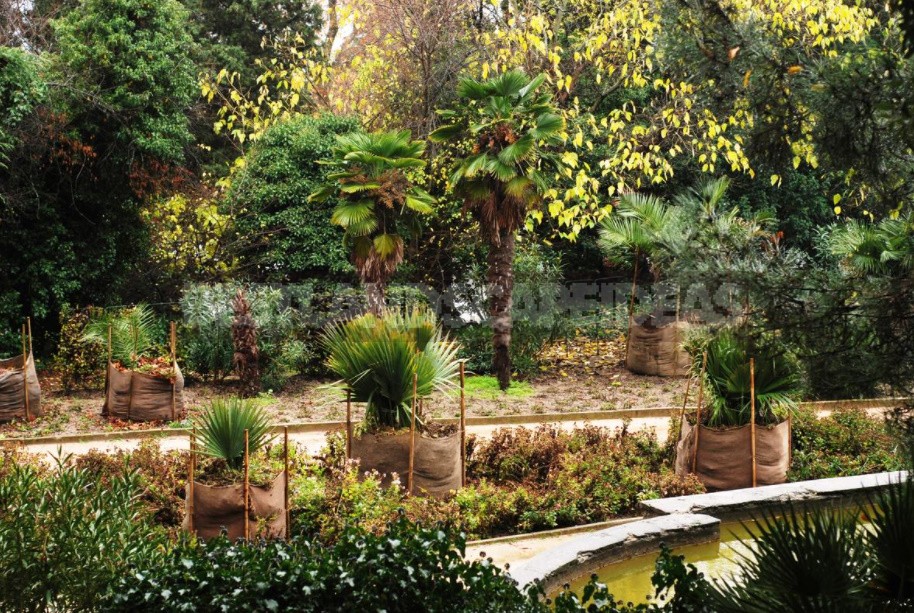
It is there that species grow that have adapted to the conditions of the middle line for many years — some bloom, bear fruit, give self-seeding and full-fledged seed offspring. But in order to understand where and how to grow palm trees in such an area, we will specify their winter hardiness according to USDA zones. So, meet us!
Butia capitata
Butia capitata, syn. Cocos capitata is a very spectacular single-stemmed palm tree with a height of 4-6 m and a width of 3-5 m, with a head-thickened base of the trunk. She is originally from Southern Brazil, Uruguay. Thermophilic, so she needs to choose sunny areas. According to the USDA, it belongs to winter hardiness zones 9-11. Tolerates winter waterlogging of the soil. In the conditions of the botanical garden, no serious damage was noted by low temperatures. It winters without shelter.
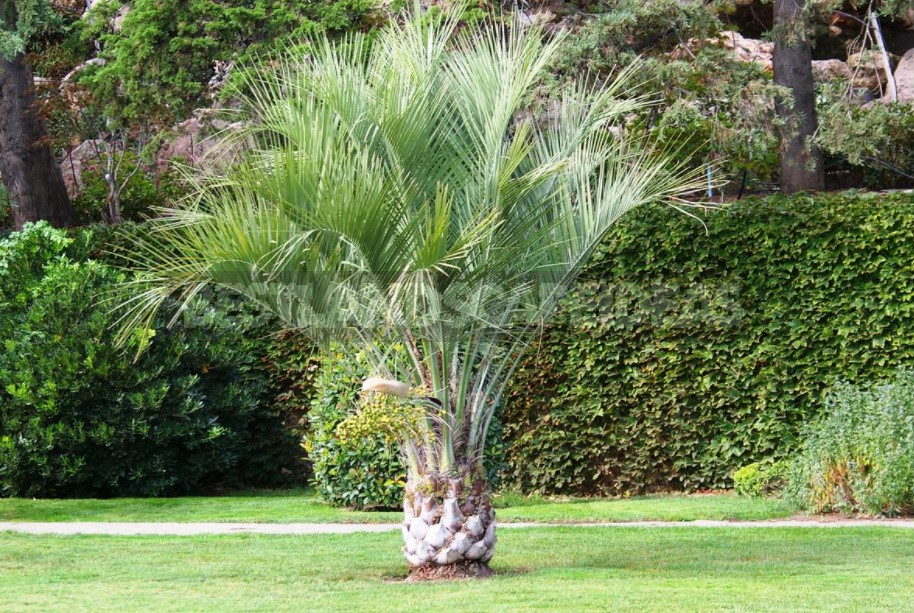
The leaves are bluish, hard, up to 2 m long. Drooping inflorescences of yellowish flowers up to 1.5 m long; they bloom in early summer. The fruits are bulbous, orange-yellow, juicy; they ripen in the autumn of the same year.
Features of care and reproduction
It is light-loving, not demanding of soils — but prefers loose, well-drained ones. In the open ground, they are planted with 10-year-old plants. It tolerates transplanting with a lump of earth well, while preserving almost all the leaves. In other regions, it can be grown in a tub culture. Propagated by seeds-freshly harvested give good germination. In the first years, it grows quickly. Young butya is characterized by especially beautiful large curved leaves. A spectacular palm tree for single plantings, groups and short alleys.
Washingtonia filifera
Washingtonia filifera, syn. W. filamentosa is a single-stemmed palm with a height of 15-20 m and a width of 3-6 m, with a spectacular trunk that self-cleanses from the remains of the bases of the leaf petioles. She is originally from the USA (Southern California, Southern Arizona). Winter hardiness, according to USDA data, corresponds to zones 8-12. It winters with the shelter of the trunk base.
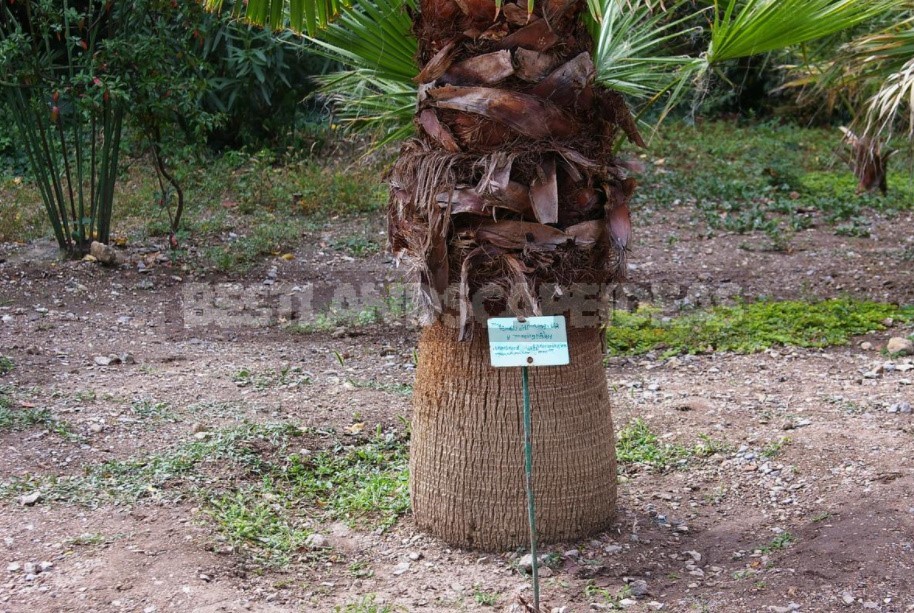
Washingtonia filifera has very beautiful relief leaves 1.5-3 m long with hanging white threads. The flowers are small, white-cream, collected in drooping inflorescences up to 5 m long; they bloom in summer. The fruits are large, drupe-shaped.
Features of care and reproduction
Washingtonia filifera is light-loving. The most powerful specimens grow on well-drained loose soils. Tolerates winter waterlogging of the soil. It can grow on the seashore. It reproduces well with freshly harvested seeds.
Sabal minor
Sabal minor, syn. S. glabra, S. minima, S. pumila is a palm tree with a short trunk 1-2 m high and up to 3 m wide.It is native to the southeastern United States. Winter hardiness, according to USDA data, corresponds to the 7/8-11th zones. It winters with the shelter of the trunk base. Some dendrologists believe that the cold-resistant in these conditions in the south is not a typical species, but its hybrid offspring with a North American species-Sabal palmetto.
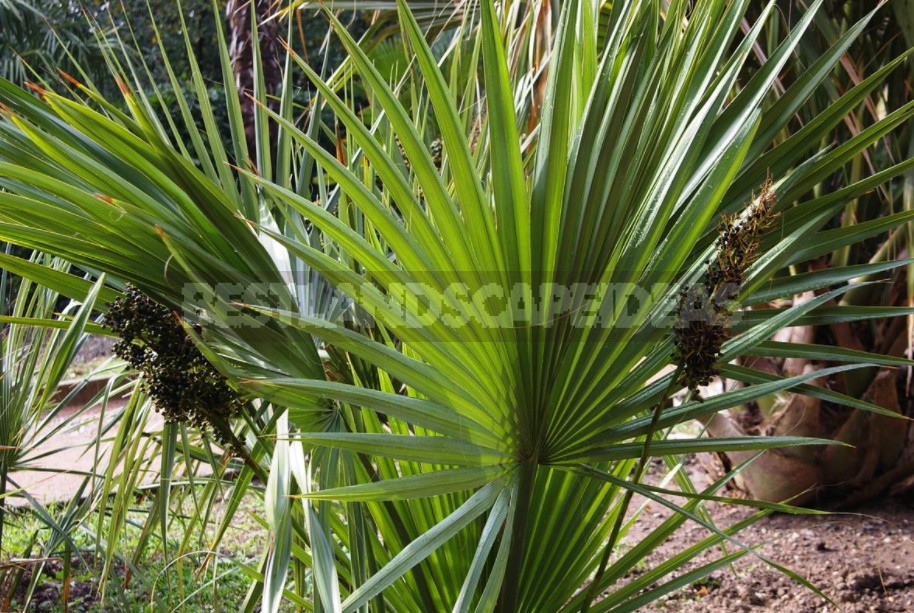
The leaves are bluish-green, 1-5 m long, on long and very strong petioles, fan-shaped. Inflorescences are spike-shaped and paniculate-drooping, very large, up to 2 m long.The flowers are cream, bisexual; they bloom in summer. The fruits are drupes with a juicy pericarp, small, spherical-compressed, black.

Features of care and reproduction
Like all palm trees, it likes a sunny, warm place with loose soils. In the rest of the territory, it is grown as a tub culture. Propagated by seeds. Soil germination immediately after harvesting is 90-95%. When stored for a year at room temperature-70%. The seeds germinate within 4 months. It is better to germinate seeds at +20°C (18 hours) or at +30°C (6 hours). Soaking in hot water (about 90°C), mechanical scarification and especially the removal of the cap over the embryo cause the seeds to germinate for several days.
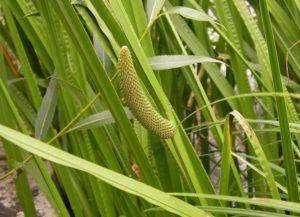


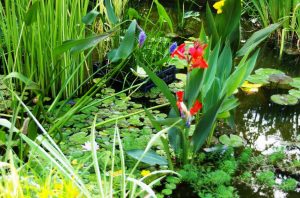
Leave a Reply